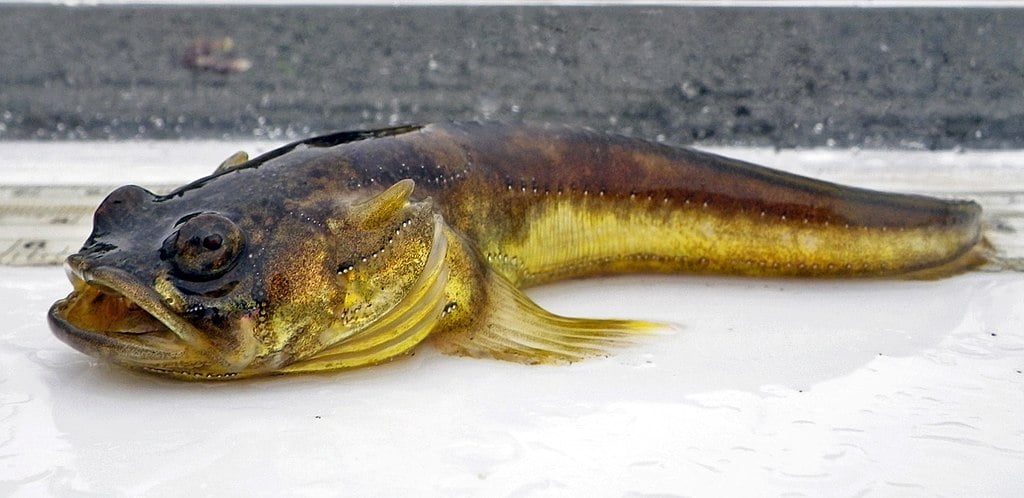What Is The Best Way To Communicate With A Fish
Have you ever wondered what is the best way to communicate with a fish? Is there a secret code or language that we could use? Many anglers and fish enthusiasts have pondered on this question, and the answer may surprise you. In this article, we are going to explore the different ways to communicate with fish and find out what really works.
The Struggle of Communication
Many people who love fishing or working with aquatic animals might feel frustrated that they cannot communicate with these creatures. As humans, we tend to rely on our verbal communication skills to convey our thoughts and emotions. However, fish and other aquatic animals don't have this capability. This can be quite challenging for fish enthusiasts who want to understand fish behavior, habitat, and lifestyle.
The Best Way To Communicate With A Fish
The good news is that there are ways to communicate with fish without necessarily relying on verbal language. Many anglers use different baits and lures to attract fish and get their attention. These can include brightly colored artificial lures or specific types of bait, depending on the fish species. These lures mimic the movements of prey, and fish are naturally attracted to them. Additionally, underwater cameras can help fish enthusiasts observe fish behavior, habitat, and interactions with each other. This can provide valuable insights into what is the best way to communicate with a fish.
Main Points Recap
Understanding what is the best way to communicate with a fish can be challenging. Being aware of fish behavior, habitat, and interactions can help identify the most effective ways to communicate with them. Using lures and bait that mimic prey movements, and underwater cameras can help with observation and understanding.
Personal Experience and Explanation
As a fish enthusiast, I have experimented with different kinds of lures and baits to attract and communicate with fish. One experience that stands out was when I went fishing in a remote river. I used a topwater bait with a popping sound. Suddenly, a group of fish started jumping out of the water, trying to catch the bait. It was fascinating to see how the fish responded to the bait's movements and sound. This experience made me realize the importance of understanding the right bait and lure for a specific fish species and environment.
Using Underwater Cameras
Underwater cameras are another great tool for communicating with fish. These cameras provide a window into the underwater world, helping us observe fish behavior, habitat, and interactions. By watching fish movement and behavior through an underwater camera, we can get a sense of what they are interested in, what they are afraid of, and how they communicate with each other. This information can help anglers make better decisions about bait, lures, and fishing techniques.
The Role of Body Language
Body language is another important aspect of communicating with fish. It's not just about the bait or the lure, but also about how it is presented. Fish are highly sensitive to vibrations and movements in the water, so anglers need to be aware of their body language while fishing. Slow and subtle movements can be more effective than erratic or sudden movements, which can scare fish away.
Understanding The Environment
When trying to communicate with fish, it's essential to understand the environment in which they live. Different fish species live in different habitats, such as riverbeds, lakes, or the deep ocean. Understanding their living environment, including water temperature, salinity, and depth, can give us a clue about their behavior and habits. This information can be vital in determining what bait or lure to use and how to communicate with them effectively.
Question and Answer
Q1: Is vocal communication possible with fish?
A: No, fish cannot communicate using verbal language like humans.
Q2: What cues do fish use to communicate with each other?
A: Fish use non-verbal cues such as body language, vibrations, and pheromones to communicate with each other.
Q3: How important is understanding the fish environment?
A: Understanding the fish environment is crucial in identifying the most effective ways to communicate with them. Fish behavior and habits are heavily influenced by their living environment, so it's essential to consider this factor.
Q4: How can underwater cameras help in fish communication?
A: Underwater cameras provide insights into fish behavior, habitat, and interactions, which can help anglers make better decisions about bait, lures, and fishing techniques.
Conclusion
What is the best way to communicate with a fish? It's not just about verbal language but understanding their behavior, habitat, and environment. Through observation and experimentation, we can identify the most effective ways to communicate with fish. Whether it be through bait, lures, body language, or underwater cameras, there are ways to communicate with these fascinating creatures.
Gallery
How Do You Communicate With A Fish? Drop It A Line! - Funny Fishing

Photo Credit by: bing.com / communicate drop fish line hoodie teepublic
The Best Way To Observe A Fish Is To Become A Fish. (quote)
Photo Credit by: bing.com / way fish observe become loading
What Is The Best Way To Communicate With A Fish? - November 2022 ScopiFish

Photo Credit by: bing.com /
The Best Way To Communicate With A Fish Is To Drop Them A Line. #Humor

Photo Credit by: bing.com / communicate
How Do Fish Communicate With Each Other? » Science ABC

Photo Credit by: bing.com / humming toadfish midshipman communicate notatus poisson crapaud sausalito hum peixes producing nocturne hopes hampshire inglaterra barulho misterioso acasalamento pipeline comunicam